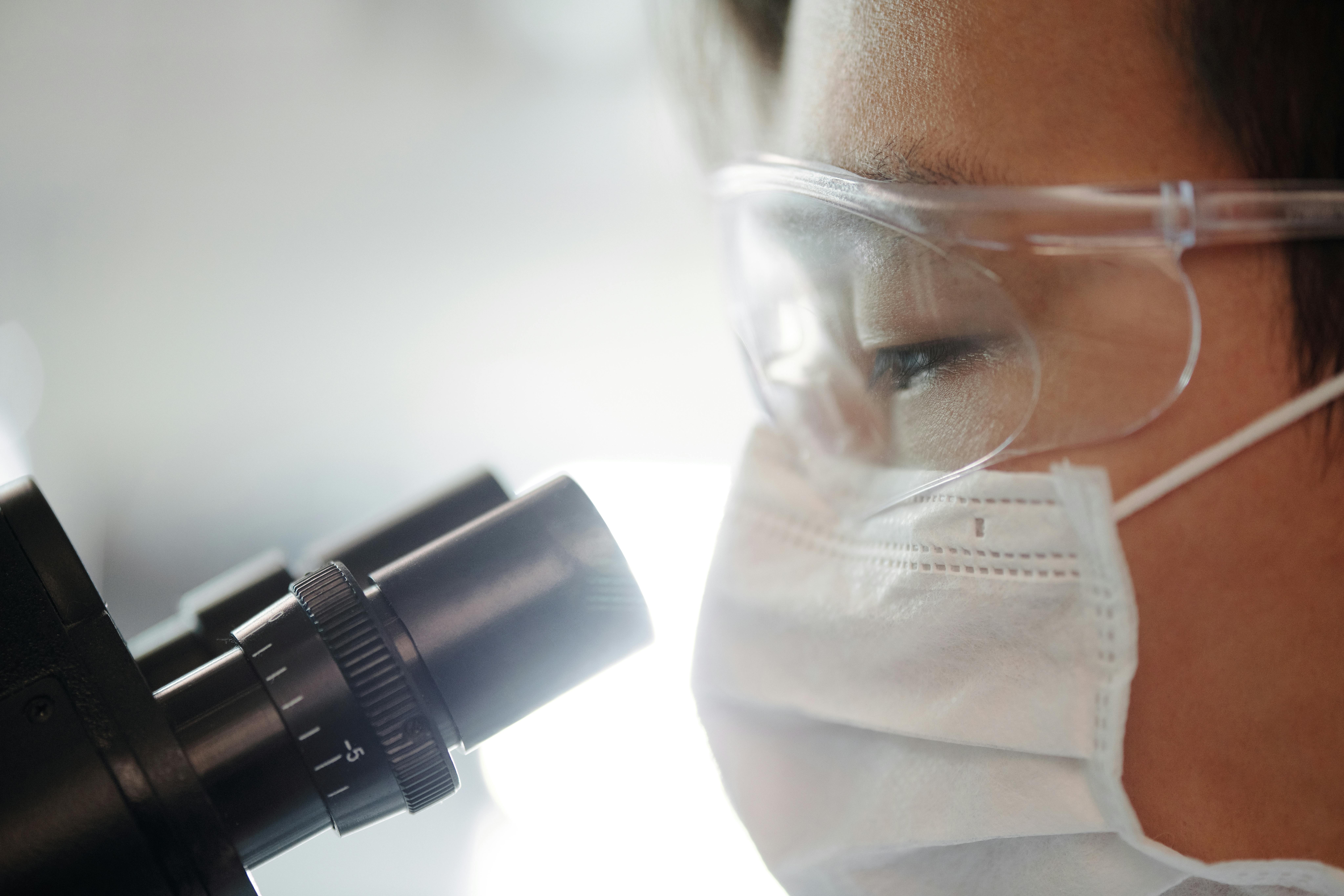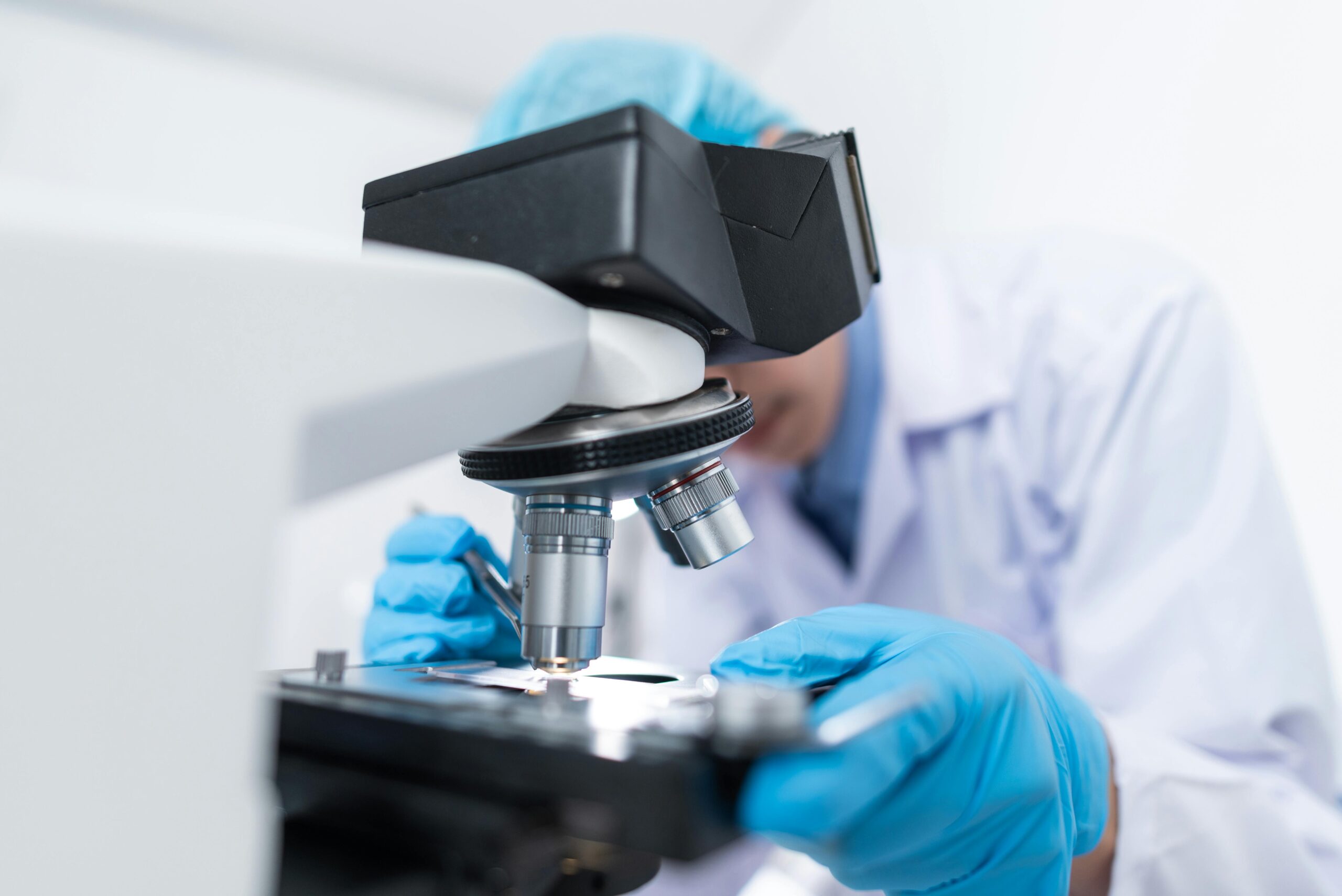The landscape of medical diagnostics is undergoing a profound transformation, driven by revolutionary CRISPR-based technologies that promise rapid, accurate, and accessible disease detection. These innovative systems are redefining how we identify pathogens, genetic disorders, and cancers.
For decades, healthcare professionals have relied on traditional diagnostic methods that often require specialized laboratories, expensive equipment, and days or even weeks to deliver results. The emergence of CRISPR-powered diagnostic platforms like SHERLOCK and DETECTR is fundamentally changing this paradigm, offering point-of-care testing capabilities that were once confined to science fiction. These technologies harness the precision of CRISPR gene-editing systems to detect specific genetic sequences with unprecedented accuracy and speed.
🧬 Understanding the CRISPR Revolution in Diagnostics
CRISPR technology, originally discovered as a bacterial immune system, has evolved far beyond its initial gene-editing applications. Scientists have adapted this molecular machinery into powerful diagnostic tools that can identify minute quantities of genetic material from viruses, bacteria, and human cells. The fundamental principle relies on programmable RNA guides that direct CRISPR enzymes to specific DNA or RNA sequences, triggering a detectable signal when a match is found.
What makes CRISPR diagnostics particularly remarkable is their sensitivity and specificity. These systems can distinguish between closely related pathogens, identify single nucleotide variations, and detect targets at concentrations as low as attomolar levels. This precision surpasses many conventional diagnostic methods while maintaining simplicity in execution.
SHERLOCK: Specific High-Sensitivity Enzymatic Reporter UnLOCKing 🔬
Developed by researchers at the Broad Institute of MIT and Harvard, SHERLOCK represents one of the most sophisticated CRISPR-based diagnostic platforms available today. The system utilizes Cas13 enzymes, which target RNA sequences rather than DNA, providing versatility in detecting various pathogens and genetic markers.
The Mechanism Behind SHERLOCK
SHERLOCK operates through a multi-step process that begins with sample preparation. When a target sequence is present, it activates the Cas13 enzyme, which then exhibits “collateral cleavage activity” – essentially cutting nearby reporter molecules indiscriminately. This activity generates a fluorescent or colorimetric signal that can be visualized with simple equipment or even the naked eye.
The latest iterations of SHERLOCK have incorporated additional innovations, including isothermal amplification methods that eliminate the need for thermal cyclers. This advancement makes the technology truly portable and suitable for resource-limited settings where traditional PCR equipment is unavailable.
Clinical Applications of SHERLOCK Technology
SHERLOCK has demonstrated impressive capabilities across multiple diagnostic scenarios. During the COVID-19 pandemic, researchers developed SHERLOCK-based tests that could detect SARS-CoV-2 RNA within an hour, providing a rapid alternative to standard RT-PCR testing. The platform has also shown promise in identifying:
- Dengue virus serotypes with strain-level discrimination
- Zika virus in clinical samples and mosquito vectors
- Cancer-associated mutations in cell-free DNA
- Antibiotic resistance genes in bacterial infections
- Human papillomavirus strains linked to cervical cancer
DETECTR: DNA Endonuclease-Targeted CRISPR Trans Reporter 🎯
Parallel to SHERLOCK’s development, scientists at the University of California, Berkeley, and the Innovative Genomics Institute created DETECTR. This platform primarily employs Cas12 enzymes, which recognize DNA sequences and exhibit similar collateral cleavage properties upon target binding.
How DETECTR Differs and Complements SHERLOCK
While both technologies share fundamental principles, DETECTR’s focus on DNA detection makes it particularly suitable for identifying genomic sequences, including those from DNA viruses, bacterial pathogens, and human genetic variants. The Cas12 enzyme used in DETECTR cleaves single-stranded DNA reporters, producing signals that can be read using fluorescence readers or lateral flow strips similar to pregnancy tests.
One significant advantage of DETECTR is its ability to multiplex detection, simultaneously screening for multiple targets in a single reaction. This capability proves invaluable when differential diagnosis is required or when monitoring for several pathogens simultaneously.
Real-World Implementation of DETECTR
DETECTR technology has transitioned from laboratory benches to practical applications with remarkable speed. Mammoth Biosciences, a company co-founded by CRISPR pioneer Jennifer Doudna, has commercialized DETECTR-based diagnostic tests. Their COVID-19 test received Emergency Use Authorization from the FDA, validating the platform’s clinical utility and regulatory viability.
Beyond infectious disease detection, DETECTR shows potential in oncology applications, where it can identify tumor-specific mutations in liquid biopsies. This non-invasive approach to cancer monitoring could revolutionize how clinicians track treatment response and disease progression.
⚡ Comparative Advantages Over Traditional Diagnostics
The benefits of CRISPR-powered diagnostics extend beyond mere novelty. These systems address fundamental limitations of existing diagnostic methodologies:
| Feature | Traditional Methods | CRISPR Diagnostics |
|---|---|---|
| Time to Result | Hours to days | 30-60 minutes |
| Equipment Required | Specialized lab instruments | Minimal, portable devices |
| Sensitivity | Varies widely | Attomolar detection |
| Specificity | Good to excellent | Single-nucleotide resolution |
| Cost per Test | $50-500+ | Potentially <$10 |
| Point-of-Care Capability | Limited | High feasibility |
Transforming Global Health Access 🌍
Perhaps the most profound impact of CRISPR diagnostics lies in their potential to democratize healthcare access. In resource-limited settings where laboratory infrastructure is scarce, these portable, affordable tests could enable disease surveillance and early intervention programs previously impossible to implement.
Applications in Low-Resource Settings
Field deployability represents a game-changing characteristic of SHERLOCK and DETECTR. Health workers equipped with simple heating devices and lateral flow readers can diagnose infectious diseases in remote villages, refugee camps, or during epidemic responses. This capability addresses a critical healthcare disparity, where diagnostic delays often lead to worse outcomes and broader disease transmission.
Organizations are already piloting CRISPR diagnostic programs in sub-Saharan Africa for tuberculosis detection and in Southeast Asia for dengue surveillance. These initiatives demonstrate the technology’s practical viability outside controlled laboratory environments.
🦠 Pandemic Preparedness and Rapid Response
The COVID-19 pandemic highlighted critical vulnerabilities in global diagnostic capacity. CRISPR-based platforms offer a solution to rapid test development for emerging pathogens. Because these systems are programmable, scientists can design new diagnostic assays within days of sequencing a novel pathogen’s genome.
This adaptability creates a framework for pandemic preparedness where diagnostic capacity doesn’t lag behind outbreak identification. Future emerging infectious diseases could be met with diagnostic tests deployed within weeks rather than months, containing outbreaks before they become pandemics.
Multiplexed Pathogen Panels
Advanced iterations of both SHERLOCK and DETECTR support multiplexing, enabling simultaneous detection of multiple pathogens. This capability is particularly valuable for syndromic diagnostics where symptoms overlap between different diseases. A single test could differentiate between influenza, COVID-19, RSV, and other respiratory pathogens, guiding appropriate treatment decisions immediately.
💊 Personalized Medicine and Cancer Detection
Beyond infectious disease applications, CRISPR diagnostics are pioneering advances in personalized medicine. The ability to detect specific genetic mutations with such precision enables targeted therapy selection and treatment monitoring with unprecedented accuracy.
Liquid Biopsy Revolution
Liquid biopsies, which analyze circulating tumor DNA in blood samples, represent a non-invasive approach to cancer detection and monitoring. CRISPR diagnostics excel at identifying rare mutations in these samples, potentially detecting cancers at earlier stages when treatment is most effective. This application could transform cancer screening programs, making them more accessible and less invasive.
Pharmacogenomics Applications
CRISPR-based tests can identify genetic variations affecting drug metabolism, enabling clinicians to prescribe medications optimized for individual patients. This precision reduces adverse reactions and improves therapeutic outcomes, moving healthcare toward truly personalized treatment paradigms.
🚀 Current Limitations and Ongoing Innovations
Despite their impressive capabilities, CRISPR diagnostics face challenges that researchers are actively addressing. Sample preparation remains a bottleneck, as extracting nucleic acids from clinical specimens requires processing steps that can complicate point-of-care implementation. Scientists are developing integrated sample-to-answer systems that minimize manual handling.
Regulatory pathways for these novel diagnostics are still evolving. While emergency authorizations accelerated COVID-19 test approvals, establishing comprehensive regulatory frameworks for routine clinical use requires ongoing collaboration between developers and regulatory agencies.
Next-Generation Improvements
Research teams worldwide are enhancing CRISPR diagnostic platforms with innovations including smartphone-based readers that eliminate specialized detection equipment, lyophilized reagents that extend shelf life without refrigeration, and machine learning algorithms that improve signal interpretation and reduce false positives.
💡 The Economic Impact on Healthcare Systems
The economic implications of widespread CRISPR diagnostic adoption are substantial. Reduced diagnostic costs, faster treatment initiation, and decreased unnecessary antibiotic use could generate significant healthcare savings. Early disease detection prevents complications that require expensive interventions, shifting healthcare economics toward prevention rather than crisis management.
For healthcare systems in developing nations, affordable diagnostics represent opportunities to build robust disease surveillance networks without massive infrastructure investments. This democratization of diagnostic capability could reduce global health inequities significantly.
Regulatory Landscape and Clinical Validation 📋
As CRISPR diagnostics transition from research tools to clinical products, rigorous validation becomes essential. Regulatory agencies like the FDA and EMA are establishing evaluation frameworks specific to these technologies. Clinical trials demonstrating sensitivity, specificity, and real-world performance are crucial for widespread adoption.
Several CRISPR diagnostic tests have already achieved regulatory milestones, paving pathways for subsequent products. These approvals validate the technology’s clinical utility while establishing precedents for regulatory evaluation criteria.
🔮 Future Horizons: Where CRISPR Diagnostics Are Heading
The trajectory of CRISPR diagnostic technology points toward increasingly integrated, automated systems. Researchers envision wearable biosensors continuously monitoring for pathogens or disease biomarkers, providing real-time health surveillance. Such devices could alert individuals to infections before symptoms appear or detect cancer recurrence at the earliest possible stage.
Integration with electronic health records and artificial intelligence could create predictive diagnostic systems that not only identify current conditions but forecast disease risks based on genetic profiles and environmental exposures. This convergence of technologies represents the ultimate realization of precision medicine.
Environmental and Agricultural Applications
Beyond human health, CRISPR diagnostics are finding applications in food safety testing, environmental monitoring, and agricultural disease surveillance. Rapid detection of foodborne pathogens, water contaminants, or crop diseases using portable CRISPR tests could prevent outbreaks and protect ecosystems.
Empowering Healthcare Providers and Patients Alike 👨⚕️
The accessibility of CRISPR diagnostics empowers both healthcare providers and patients. Clinicians in remote areas gain diagnostic capabilities previously available only in specialized centers, while patients benefit from faster diagnoses, reduced healthcare visits, and earlier interventions that improve outcomes.
Patient empowerment extends to home testing scenarios, where CRISPR-based tests could enable individuals to monitor chronic conditions or screen for infections without clinic visits. This shift toward decentralized healthcare aligns with broader trends in telemedicine and patient-centered care models.
Building a Sustainable Diagnostic Ecosystem 🌱
Long-term success of CRISPR diagnostics requires building sustainable ecosystems encompassing research, development, manufacturing, distribution, and education. Training healthcare workers to effectively use these technologies, establishing quality control standards, and ensuring equitable access across socioeconomic boundaries are essential components of this ecosystem.
Public-private partnerships, academic collaborations, and policy initiatives all play roles in translating CRISPR diagnostic potential into tangible healthcare improvements. The technology’s promise can only be fully realized through coordinated efforts across multiple sectors.

Embracing the Diagnostic Revolution
CRISPR-powered diagnostics like SHERLOCK and DETECTR represent more than incremental improvements over existing technologies—they constitute a paradigm shift in how we approach disease detection. Their combination of speed, accuracy, affordability, and accessibility addresses fundamental healthcare challenges while opening possibilities previously unimaginable.
As these technologies mature and proliferate, they will reshape healthcare delivery models, enhance pandemic preparedness, and democratize access to precision diagnostics globally. The revolution in disease detection is not a distant future prospect but an unfolding reality that promises to make healthcare more responsive, personalized, and equitable for all populations.
The journey from laboratory innovation to widespread clinical implementation continues, but the trajectory is clear: CRISPR diagnostics are poised to become indispensable tools in modern medicine, transforming how we detect, understand, and ultimately defeat diseases that threaten human health.
Toni Santos is a biotechnology storyteller and molecular culture researcher exploring the ethical, scientific, and creative dimensions of genetic innovation. Through his studies, Toni examines how science and humanity intersect in laboratories, policies, and ideas that shape the living world. Fascinated by the symbolic and societal meanings of genetics, he investigates how discovery and design co-exist in biology — revealing how DNA editing, cellular engineering, and synthetic creation reflect human curiosity and responsibility. Blending bioethics, science communication, and cultural storytelling, Toni translates the language of molecules into reflections about identity, nature, and evolution. His work is a tribute to: The harmony between science, ethics, and imagination The transformative potential of genetic knowledge The shared responsibility of shaping life through innovation Whether you are passionate about genetics, biotechnology, or the philosophy of science, Toni invites you to explore the code of life — one discovery, one cell, one story at a time.




